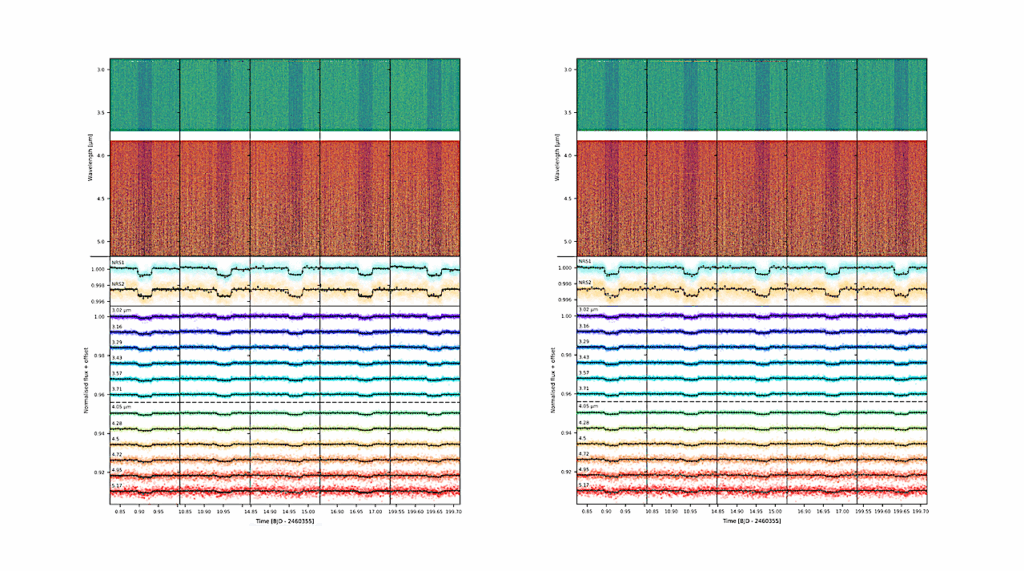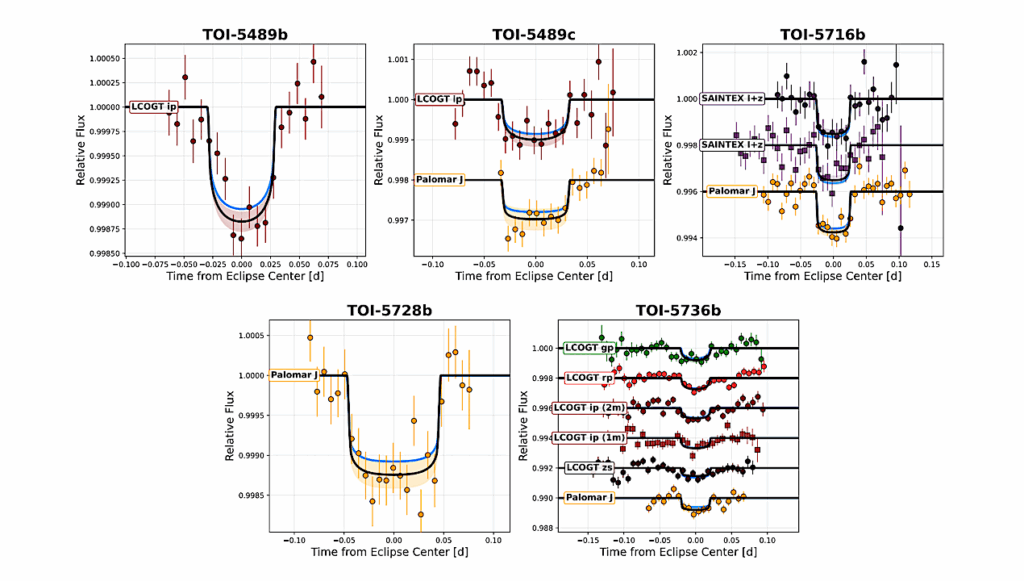The Occurrence Rate of Terrestrial Planets Orbiting Nearby Mid-to-late M Dwarfs from TESS Sectors 1-42

We present an analysis of a volume-complete sample of 363 mid-to-late M dwarfs within 15 pc of the Sun with masses between 0.1 and 0.3 M⊙ observed by TESS within Observation Sectors 1 to 42.
The median mass of the stars in this sample is 0.17 M⊙. We search the TESS 2-minute cadence light curves for transiting planets with orbital periods below 7 days using a modified Box-Least Squares (BLS) algorithm and recover all 6 known planets within the sample as well as a likely planet candidate orbiting LHS 475 (TESS Object of Interest 910.01). Each of these planets is consistent with a terrestrial composition, with planet radii ranging from 0.91 R⊕ to 1.31 R⊕.
In addition, we perform a transit injection and recovery analysis for each of the 363 stars to characterize the transit detection sensitivity as a function of planet radius, insolation, and orbital period. We obtain a cumulative occurrence rate of 0.61+0.24−0.19 terrestrial planets per M dwarf with radii above 0.5 R⊕ and orbital periods between 0.4-7 days.
We find that for comparable insolations, planets larger than 1.5 R⊕ (sub-Neptunes and water worlds) are significantly less abundant around mid-to-late M dwarfs compared to earlier-type stars, while the occurrence rate of terrestrial planets is comparable to that of more massive M dwarfs.
We estimate that overall, terrestrials outnumber sub-Neptunes around mid-to-late M dwarfs at a ratio of 14 to 1, in contrast to GK dwarfs where they are roughly equinumerous. We place a 1σ upper limit of 0.07 planets larger than 1.5 R⊕ per mid-to-late M dwarf, within the orbital period range of 0.5-7 days.
We find evidence for a downturn in occurrence rates for planet radii below 0.9 R⊕, suggesting that Earth-sized and larger terrestrials may be more common around mid-to-late M dwarfs.
Kristo Ment (1), David Charbonneau (1) ((1) Center for Astrophysics, Harvard & Smithsonian, Cambridge, MA, USA)
Comments: 25 pages, 8 figures. Submitted to the Astronomical Journal
Subjects: Earth and Planetary Astrophysics (astro-ph.EP)
Cite as: arXiv:2302.04242 [astro-ph.EP] (or arXiv:2302.04242v1 [astro-ph.EP] for this version)
Submission history
From: Kristo Ment
[v1] Wed, 8 Feb 2023 18:18:31 UTC (1,532 KB)
https://arxiv.org/abs/2302.04242
Astrobiology








